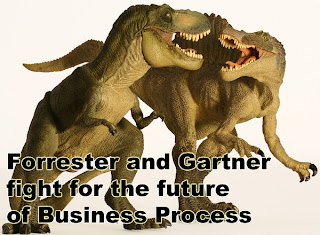“Not everything old is bad and antiquated and not everything new is shiny and good. The real secret to success is to combine the best of both.”
Rene Carayol (left), Senior Executive & Former Board Member for Pepsi, Marks & Spencer, IPC Media & The Inland Revenue
Process has indeed come a long way from it humble routes amidst the early industrial revolution and Adam Smiths ‘Wealth of Nations’.
|
One of the first people to describe process was Smith who in 1776 describes a new way for process in a Scottish pin factory. He outlines the production methods and created one of the first objective and measureable enterprise process designs. The consequence of ‘labour division’ in Smith’s example resulted in the same number of workers making 240 times as many pins as they had been before the introduction of his innovation.
Adam Smith participated in a revolution that transformed the planet. He lived at a time when the confluence of factors, political change, emergence of the New World, industrialization and a new optimism that the world could move from the shackles of the past.
In heralding a movement that developed into Scientific Management the foundation was laid that established a way of working that has survived and thrived for 200 years.
And yet now, more than ever, is a time to perhaps take a careful glance back to the past to guide the way for not only surviving the current economic turmoil but to also prepare us to thrive in the seismic shifts of the 21st century ‘new world’ order where the customer has become central to everything we do.
Leading global corporations are now evolving their tried and tested approaches into methods suited to the changed challenges of customer promiscuity, globalisation, IT innovation and the Prosumer. That is the essence of what we call Outside-In.
“The Customer Experience is the Process”
Outside-In can really be summarised in the statement that “the customer experience is the process”. We can no longer just look within our organisation boundary to create a sustainable competitive advantage. We have to extend our scope and embrace a broader view of optimising process by understanding, managing and developing customer expectations and the associated experience. We need to articulate Successful Customer Outcomes and let those guide our product and service development as we move beyond the limiting scope of silo pyramidal based left to right thinking.
In 2006 BP Group Research identified the ‘Evolution of Approaches’ and how steps can be taken to grow Lean Six Sigma’s influence and success into a strategic Outside-In toolkit. In fact the last 4 years are seeing the fruition of these advances with Best in Class 2009 & 2010 Award winners PolyOne, a dyed in the wool Lean outfit, advancing their stock price six fold in 18 months on the back of radical and innovative changes across its customer experience.
Some see Outside-In as the death knell for approaches such as for old style BPM, BPR, TQM and Lean Six Sigma. This is not so. This narrow and simplistic view does not acknowledge the stepping stones available to embrace the new customer centric order. In fact the foundations of our futures are always laid on the learnings of the past with those innovators who recognise the need to evolve leading that charge.
Victory will go to the brave who seize the moment and push forward their approaches into the brave new world of Outside-In. The sector leaders have set a precedent – can you embrace the challenge?
All the Best, Steve
If you wish to read and listen more on this theme the following references are useful.
Join the community discussing these issues, challenges and opportunities.
|
Community and social networking – Join the BP Group
|
LinkedIn
|
||
|
Outside-In The Secret of the 21st Centuries leading companies
|
Book
|
||
|
Interview Harvard Business Review with HBS
Professor Ranjay Gullati |
Video
|
http://bit.ly/RanjayOutside-In
|
|
|
Interview Wharton Business School with WBS Professor George Day
|
Video
|
http://bit.ly/WhartonGeorgeDay
|
|
|
Interview Affecto University with Steve Towers
|
Video
|
http://bit.ly/SteveTowersOutside-In
|
|
|
Interview by Megan James (IQPC)
|
Video
|
http://bit.ly/MeganJamesOutside-In
|
|
|
Downloadable keynotes and slide shows
|
Presentations
|
http://www.slideshare.net/stowers/
|
|
|
Professional – Certified Process Professional program
|
Qualifications
|
||
|
Don’t give customers what they think they want – Steve Towers
|
Article
|
||
|
Evolution of Process Excellence Approaches – BP Group
|
Research
|
||
|
Outside-In – Interview with Blog Radio’s Gienn Weiss
|
Podcast
|
||
|
The Best Performing companies Millward Optimoor
|
Research
|
||
|
UPCOMING CONFERENCES ON THE THEME OF PROCESS EXCELLENCE, ENTERPRISE BPM AND OUTSIDE-IN
|
Resources
|




